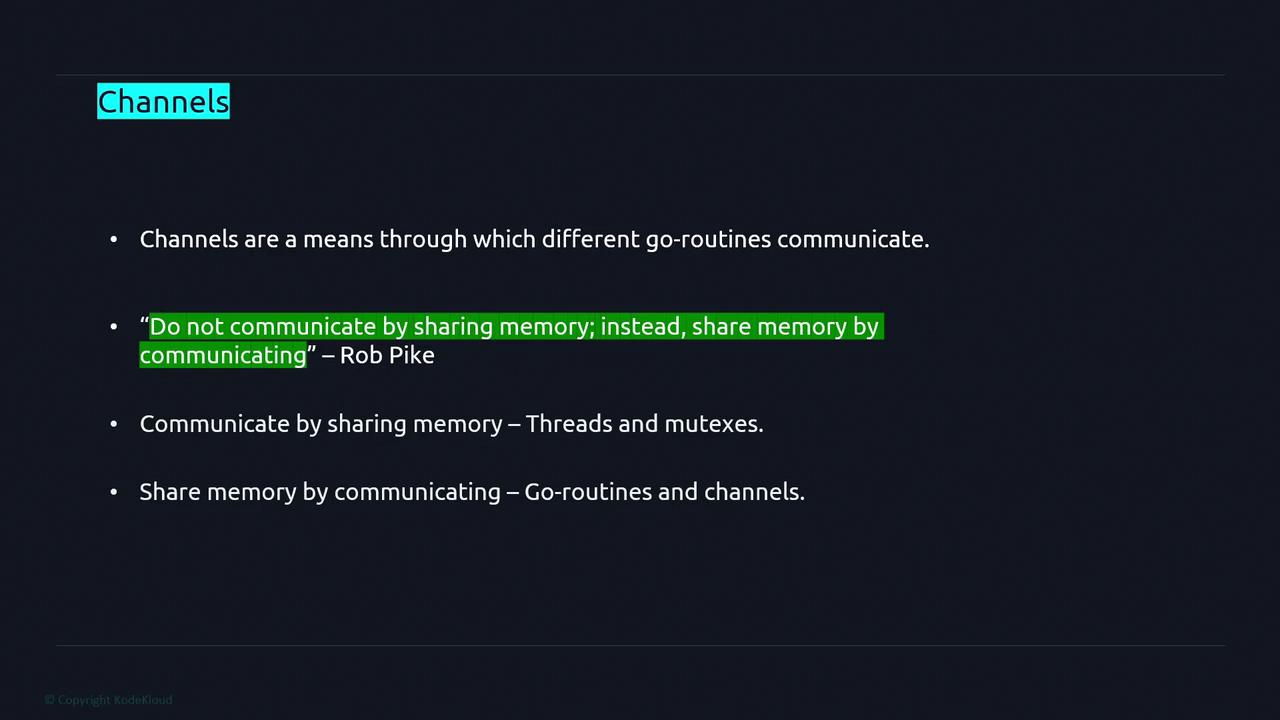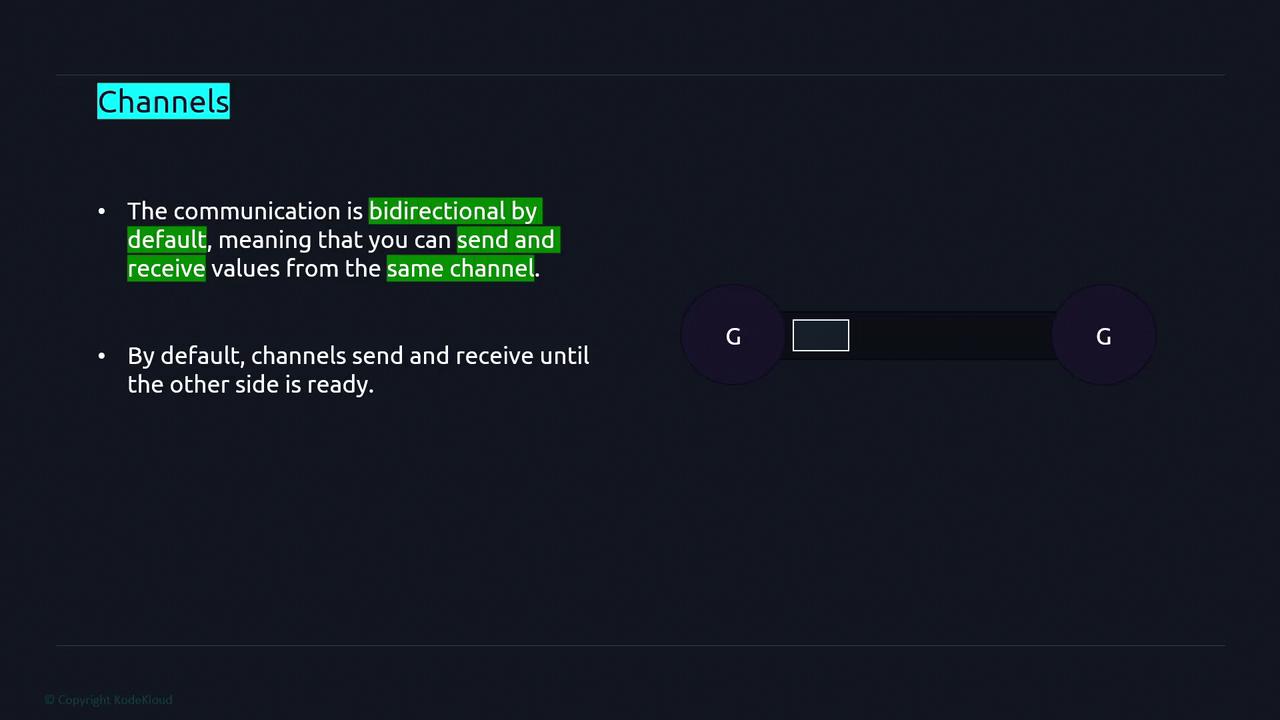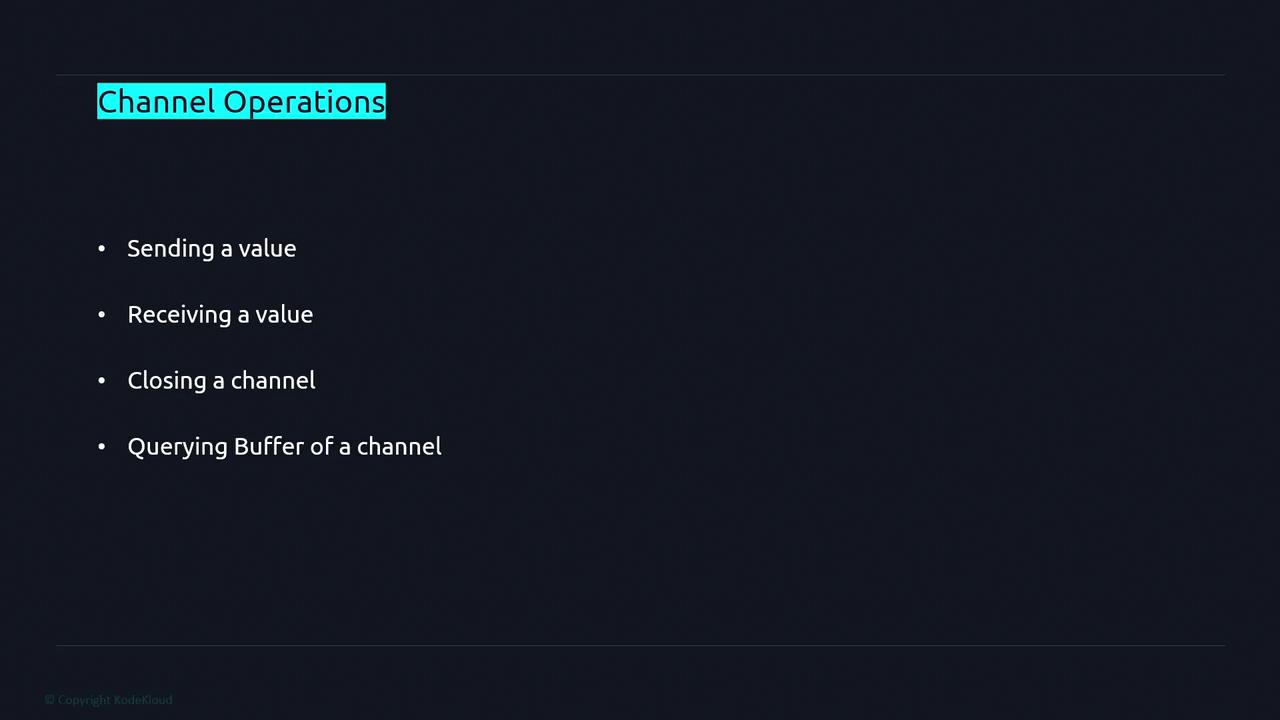Advanced Golang
Concurrency
Channels Introduction
In this lesson, we explore channels in Go and how they enable seamless communication between goroutines. Channels allow data to flow between different parts of your code, often across multiple goroutines, thereby simplifying concurrent programming by reducing the complexity inherent in traditional thread synchronization.
Key Insight
In Go, it's recommended to share memory by communicating, rather than communicating by sharing memory. This approach minimizes the need for locks and other synchronization primitives common in languages like Java or C++.
Understanding Channels
Traditionally, multithreaded programming involves protecting shared data structures using locks. Threads often compete for these locks, which can lead to complexities and performance bottlenecks. In contrast, Go's concurrency model leverages goroutines and channels to handle data exchange more elegantly. Instead of managing locks explicitly, developers pass references or copies of data between goroutines using channels—ensuring that only one goroutine interacts with a particular piece of data at any given time.

Channels support bidirectional communication by default, meaning that you can both send and receive values on the same channel. This bidirectional capability allows goroutines to synchronize without the need for explicit locks or condition variables.

Declaring and Initializing Channels
In Go, each channel is tied to a specific data type (e.g., int, string). The keyword chan is used during declaration. You can declare a channel and initialize it using the make function as demonstrated below:
var c chan string
c = make(chan string)
Channel Operations
Channels in Go offer several built-in operations that simplify the management of concurrent tasks. These operations include sending and receiving values, closing the channel, and checking its capacity or current length.

Let's dive into these operations:
Sending Values
To send a value into a channel, use the send operator (
<-). Ensure that the value is assignable to the channel’s declared type.ch <- vReceiving Values
To receive a value from a channel, position the send operator on the left side of the assignment. The returned value is stored in the variable.
val := <-chClosing Channels
When no further values need to be sent on a channel, close it using the built-in
closefunction.close(ch)Querying Channel Capacity
Use the
capfunction to retrieve the total size of a channel's buffer.cap(ch)Channel Length
The
lenfunction returns the number of elements that are currently pending in the channel's buffer.len(ch)
Conclusion
This lesson introduced the core concepts of channels in Go, covering their declaration, initialization, and key operations such as sending, receiving, closing, and querying. By facilitating communication between goroutines without explicit locks, channels provide an efficient mechanism for writing concurrent software.
We look forward to exploring more advanced topics in the upcoming lessons.
For more insights on Go and concurrent programming, consider exploring the Go Documentation and other related resources.
Watch Video
Watch video content